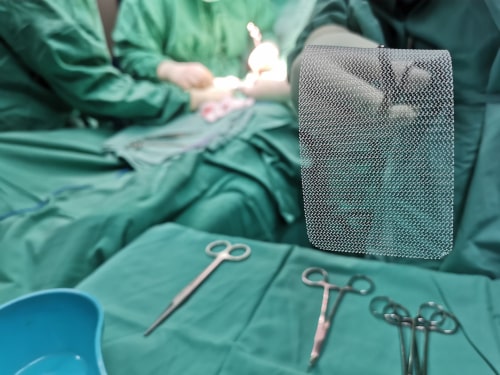Chicago, IL 60601
FREE CONSULTATIONS 312-462-4200
TOLL FREE 833-462-4200
What to Know About Postpartum Hemorrhaging
 Welcoming a newborn baby into the world is a life-changing experience. Fortunately, modern medicine has come a long way, and some birth-related complications that used to be life-threatening are now resolved much quicker and safer in Western hospitals. Unfortunately, these medical advancements have not managed to completely eliminate all the risks associated with delivering a baby. Some women experience postpartum hemorrhaging, which is excessive bleeding after childbirth, and it can be dangerous with serious and lasting effects. It is one of the leading causes of maternal death. This article will discuss several of the most common causes of postpartum hemorrhaging. If you or a loved one have suffered from this medical complication, a skilled and compassionate Chicago, IL birth injury attorney can review your case and help you get the compensation you need to cover the related costs.
Welcoming a newborn baby into the world is a life-changing experience. Fortunately, modern medicine has come a long way, and some birth-related complications that used to be life-threatening are now resolved much quicker and safer in Western hospitals. Unfortunately, these medical advancements have not managed to completely eliminate all the risks associated with delivering a baby. Some women experience postpartum hemorrhaging, which is excessive bleeding after childbirth, and it can be dangerous with serious and lasting effects. It is one of the leading causes of maternal death. This article will discuss several of the most common causes of postpartum hemorrhaging. If you or a loved one have suffered from this medical complication, a skilled and compassionate Chicago, IL birth injury attorney can review your case and help you get the compensation you need to cover the related costs.
Common Causes of Postpartum Hemorrhaging
Blood loss is a normal part of childbirth, but if it becomes excessive and does not stop, it can be life-threatening. According to the National Institutes of Health (NIH), postpartum hemorrhaging is the leading preventable cause of maternal death in the world. Some of the most common causes of this excessive bleeding include:
- Uterine rupture: If the uterus tears during labor, it can result in heavy blood loss. Sometimes, the tear can be repaired through surgery, but other times, the doctors will remove the uterus altogether to save the woman’s life.
- Uterine atony: When a uterus becomes soft and weak, it is unable to fully contract after birth, and this can make the blood vessels connecting the uterus to the placenta continue to bleed.
- Uterine inversion: While rare, this means that the uterus has turned inside out during childbirth and it is a very serious condition that leaves blood vessels that belong inside the uterus exposed and bleeding.
- Retained placenta: This happens if a placenta remains partially attached to the uterine wall after childbirth. As the uterus attempts to detach the remaining placental tissue, excessive bleeding can occur.
- Placenta previa: If the placenta covers the cervix, it can lead to excessive bleeding, and the woman might need to deliver her baby through a cesarean section.
- Blood clotting issues: Some medical conditions hinder the blood’s ability to clot, which means bleeding can not naturally stop. A woman in childbirth might have a preexisting condition that affects her blood clotting function, and even a minor cut or scrape in labor could lead to postpartum hemorrhaging.
Schedule a Free Consultation with a Cook County Birth Injury Lawyer
When postpartum hemorrhaging occurs, the mother is left fighting a potentially life-threatening condition instead of recuperating at home with her new baby. This excessive and dangerous bleeding can often be the result of a doctor’s negligence or failure to recognize signs of bleeding during childbirth. At Birth Injury Law Alliance, Ltd., we work hard to hold accountable whoever is responsible for avoidable injury. Call Birth Injury Law Alliance, Ltd. at 312-462-4200 to speak with an experienced Chicago, IL birth injury lawyer who will fight to bring you justice and recover the damages you deserve.





